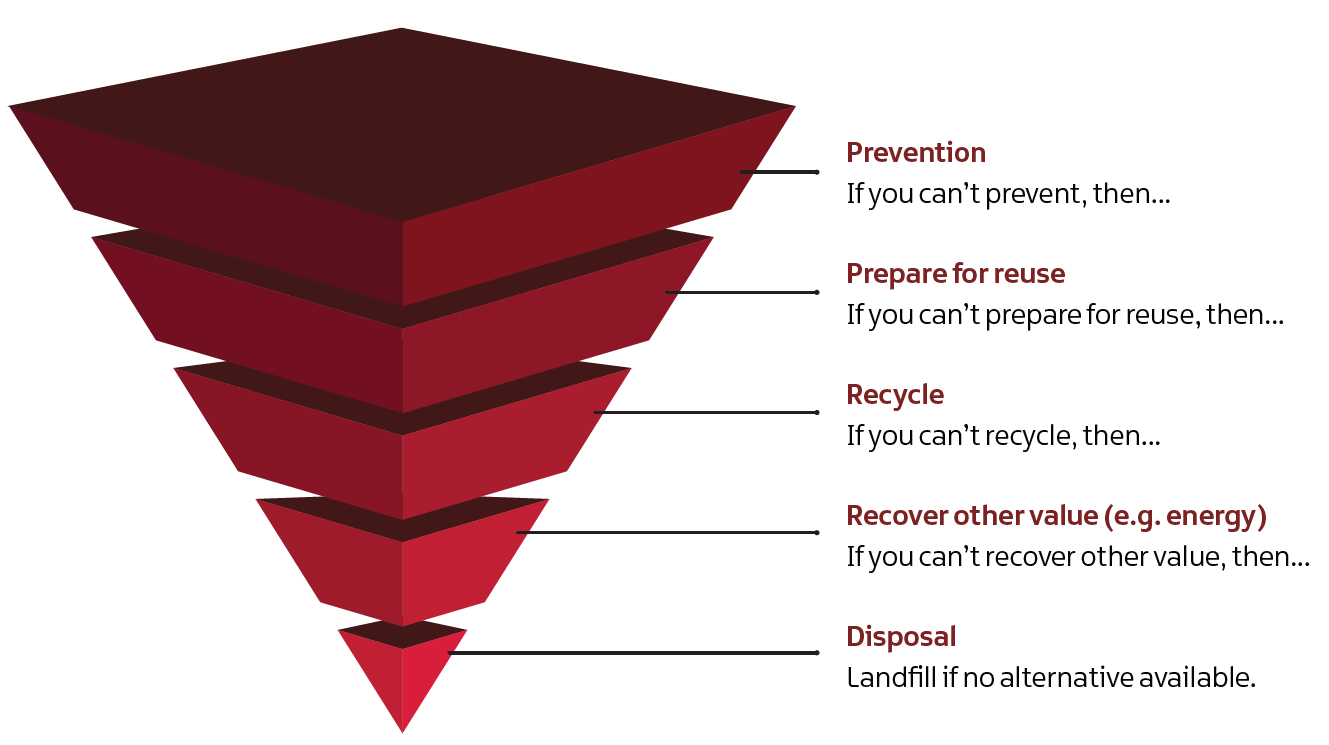Guide to Waste Management - PDF Download
How to minimise waste, lower emissions and reduce costs in your tourism business
Text-to-speech reader:
Business Guidance
Part 3: The Waste Hierarchy

When waste is created, it gives priority to preparing it for re-use, then recycling, then recovery, and last of all disposal (e.g. landfill or incineration without energy recovery).
The Waste Hierarchy: Businesses are expected to take all reasonable steps to apply the Waste Hierarchy to the management of waste.
The goal is to minimise the amount of waste your business sends to landfill through implementing prevention, reduction and recycling strategies.

As a last resort, materials that cannot be re-used, recycled or re-purposed must be landfilled and incinerated. Waste in landfill continues to cause carbon emissions and also generates air, soil, water, noise and odour pollution.
For each item of waste that ends up in your bin, ask:
It has been reported that Food Waste contributes one sixth of all global emissions. Food waste is also highly costly to your business. You must account for not just the collection cost, but also the cost of purchase, delivery, refrigeration, preparation and service.
Some priority actions are:
1. Your ability to report accurately and memorably on your successes in reducing waste depends on how well you keep track of your key numbers.
2. To apply for independent certification, you must provide data on the amount of waste generated in your business and be able to demonstrate improvements as a result of actions you take.
3. To apply for and win green awards, you must provide evidence of improvements. Your data is that evidence.
4. Sharing data with your staff makes the Waste Management Project meaningful and transparent. When the data reveals the impact of actions on the consumption and cost figures, your team will be motivated and inspired to continue with the journey.